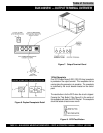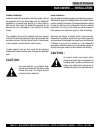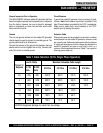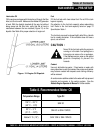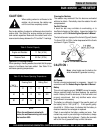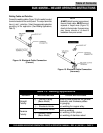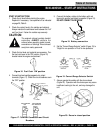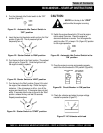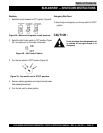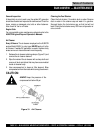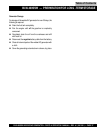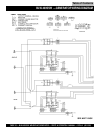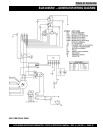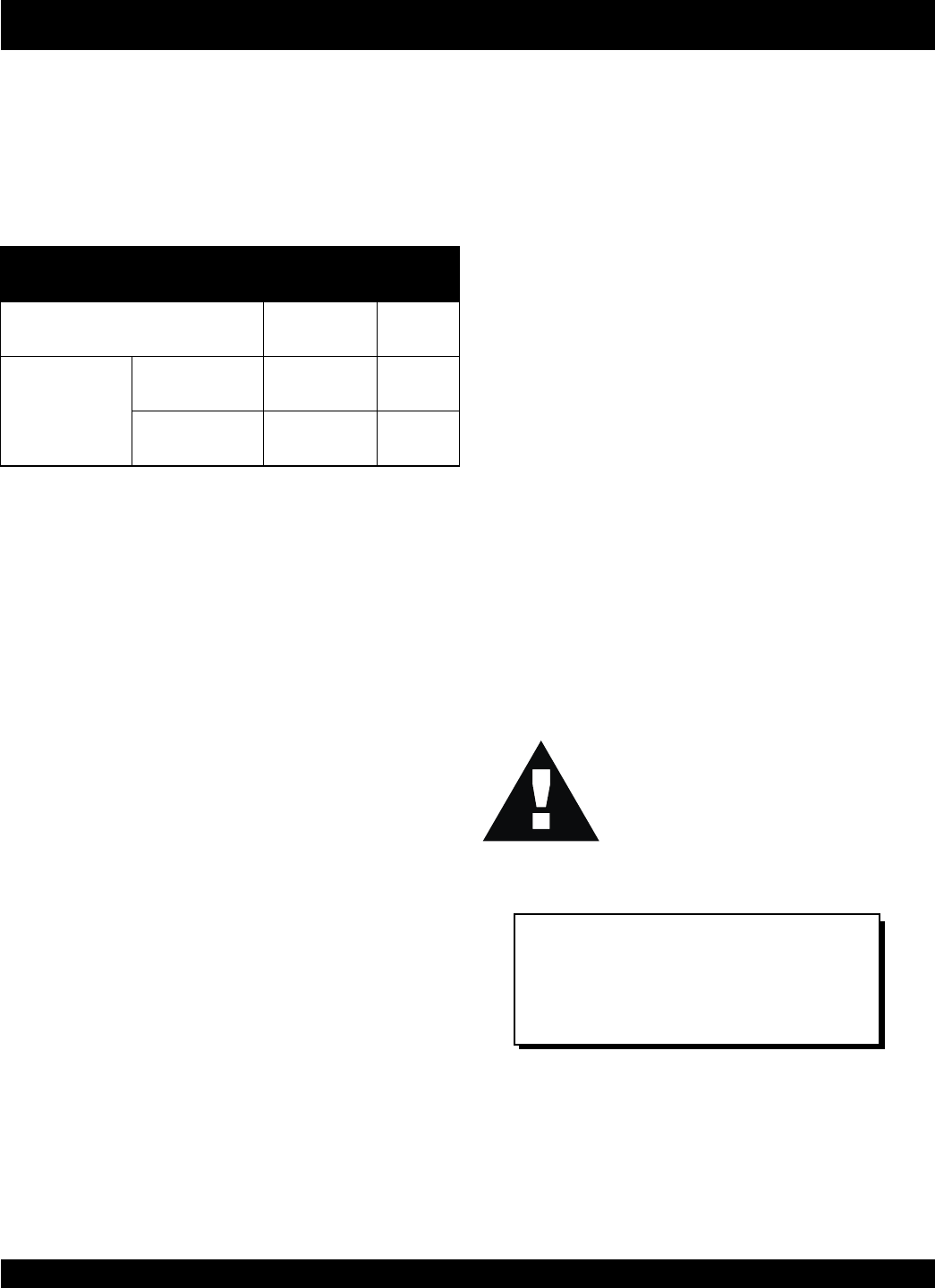
PAGE 32 — BLW-400SSW- WELDER/AC GENERATOR — PARTS & OPERATION MANUAL — REV. #1 (06/15/01)
BLW-400SSW— WELDER OPERATING INSTRUCTIONS
Duty Cycle
The welder is rated at 100% duty cycle at 350 amps.
However, the duty cycle depends upon the welding current
and number of operators. Select the appropriate duty
cycle from Table 14 to prevent overload.
elcyCytuD.41elbaT
%elcyCytuD00157
)A(tnerruC
ELGNISsselro053004
LAUDsselro071002
CAUTION :
FIVE ESSENTIALS FOR PROPER
WELDING PROCEDURES
Besides the steady sizzling sound that a correct arc produces,
the shape of the molten pool and the movement of the metal at
the rear of the pool serve as a guide in checking weld quality.
In a correctly made deposit, the ripples produced on the bead
will be uniform and the bead will be smooth, with no overlap
or undercut.
1. Correct Electrode Size
The correct choice of electrode size involves consideration of
a variety of factors. Such as the type, position, and preparation
of the joint, the ability of the electrode to carry high current
values without injury to the weld metal or loss of deposition
efficiency. The mass of work metal and its ability to maintain its
original properties after welding, the characteristics of the
assembly with reference to effect of stresses set up by heat
application, the practicability of heat treatment before and/or
after welding, the specific requirements as to welding quality
and the cost of achieving the desired results.
2. Correct Current
If current on equipment is too high or too low, you are certain
to be disappointed in your weld. If too high, the electrode melts
too fast and your molten pool is large and irregular. If too low,
there is not enough heat to melt the base metal and your
molten pool will be too small, will pile up, and look irregular.
3. Correct Arc Length
If the arc is too long or voltage too high the metal melts off the
electrode in large globules which wobble from side to side as
the arc wavers, giving a wide, spattered and irregular bead–
with poor fusion between original metal and deposited metal.
If the arc is too short or voltage too low, there is not enough
heat to melt the base metal properly and the electrode quite
often sticks to the work. This gives a high, uneven bead,
having irregular ripples and poor fusion.
4. Correct Travel Speed
When your speed is too fast: your pool does not last long
enough, impurities and gas is locked in. The bead is narrow
and ripples pointed. When speed is too slow: the metal piles
up, the bead is high and wide, with a rather straight ripple.
5. Correct Electrode Angle
The electrode angle is of particular importance in fillet
welding and deep groove welding. Generally speaking, when
making a filet weld, the electrode should be held so that it
bisects the angle between the plates and is perpendicular to
the line of weld. If under cut occurs in the vertical member
lowers the angle of the arc and directs the arc toward the
vertical member.
Always wear welding shield with correct filter
shade when welding.
NOTE
Under the above conditions, the
welder
can
supply a welding current of 120 amps, and
the
welder/AC generator
can supply up to
3 kW of power at either 120 or 240 volts.
Table of Contents



